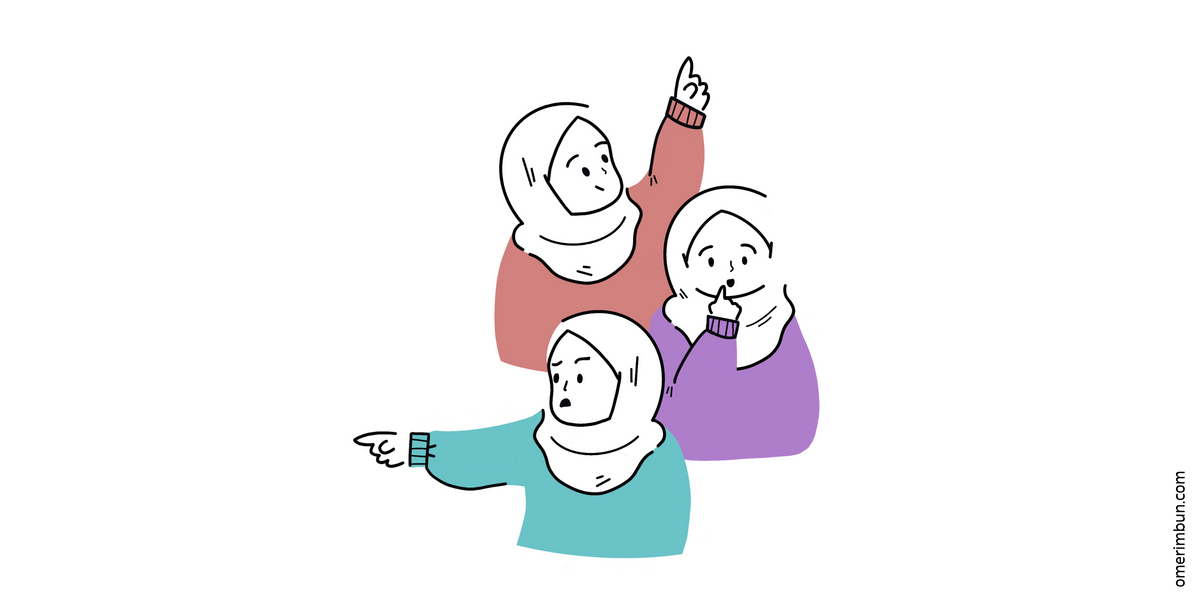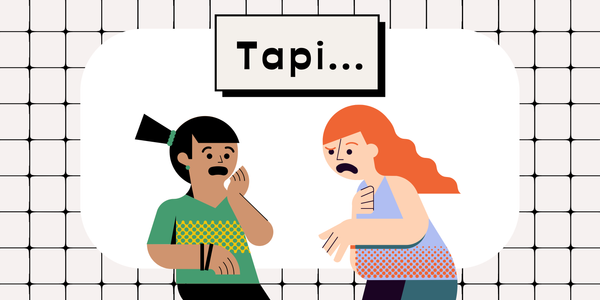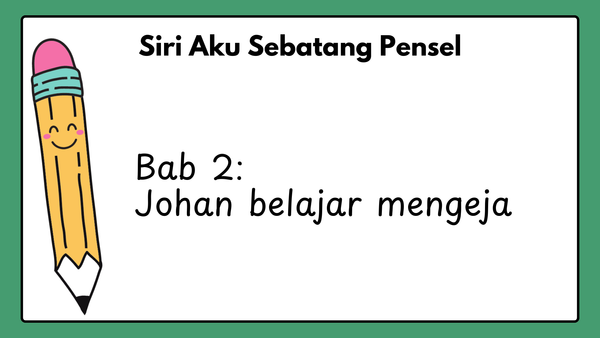Dialogue: Having lunch with friends
Malaysians often meet up to have lunch together. You can join in the conversation with your friends by reading and learning this short dialogue.
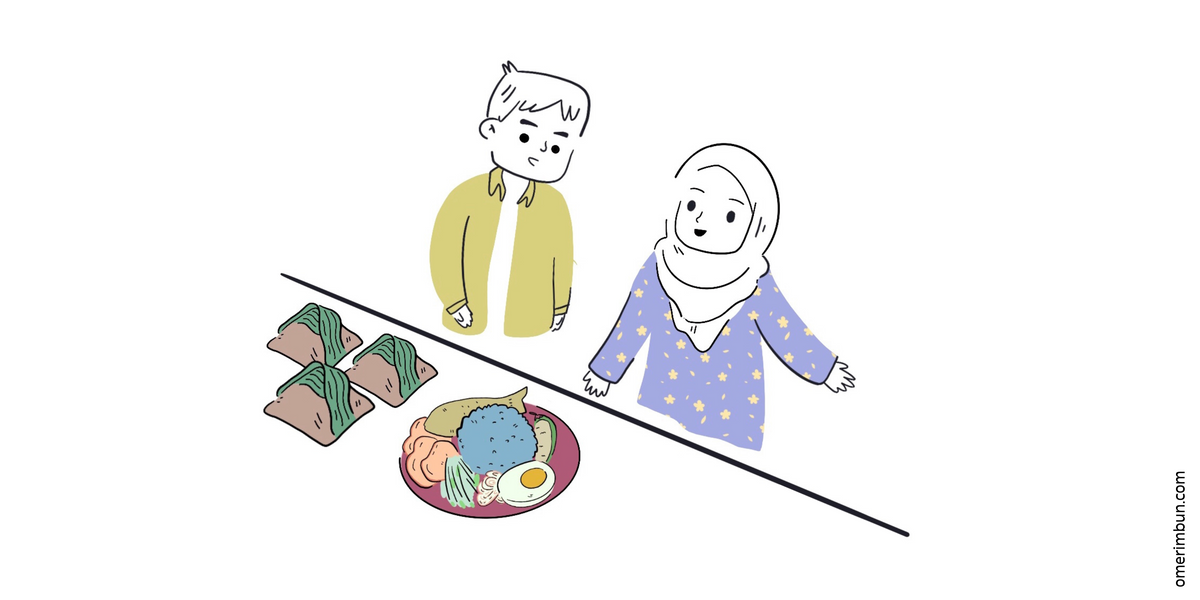
Standard Malay
Mahsuri: Eh, Ryu, awak di sini rupanya.
Ryu: Oh, hai Mahsuri. Awak mahu makan tengah hari juga?
Mahsuri: Ya, marilah makan dengan saya.
Ryu: Baiklah!
[Kedua-duanya masuk ke dalam kafe]
Ryu: Wah, banyaknya pilihan makanan di kafe ini.
Mahsuri: Betul. Saya selalu mengambil masa yang lama untuk memilih makanan, tetapi hari ini saya sudah tahu mahu makan apa. Saya ternampak rakan saya memuat naik gambar nasi lemak di Instagram. Terliur saya!
Ryu: Oh, nasi lemak! Saya pernah cuba hidangan tersebut, hmm… saya pilih nasi kerabu. Dengar kata, ini masakan terkenal dari Kelantan.
Mahsuri: Eh, banyak juga awak tahu tentang makanan Malaysia!
[Makanan sampai, Mahsuri dan Ryu mula makan]
Ryu: Sedapnya! Tetapi, sambal ini terlalu pedas untuk saya.
Mahsuri: Sungguh? Kalau begitu, saya ambil ye!
English Translation
Mahsuri: Oh, Ryu, you’re here.
Ryu: Oh, hey Mahsuri. Are you having lunch too?
Mahsuri: Yes, let’s eat with me!
Ryu: Okay!
[Both of them goes into the cafe]
Ryu: Wow, there are so many choices of food in this cafe!
Mahsuri: That’s right. I usually take a long time to choose (my) food but today I already know what I want to eat. I saw a friend upload a picture of nasi lemak on Instagram. I’m salivating already!
Ryu: Oh, nasi lemak! I’ve tried that dish before, hmm… I choose nasi kerabu. I heard that this is a famous dish from Kelantan.
Mahsuri: Oh, you know quite a lot about Malaysian food!
[The food arrives, Mahsuri and Ryu start eating]
Ryu: This is delicious! But this sambal is too spicy for me.
Mahsuri: Oh really? Then I’ll take it!
Casual Malay
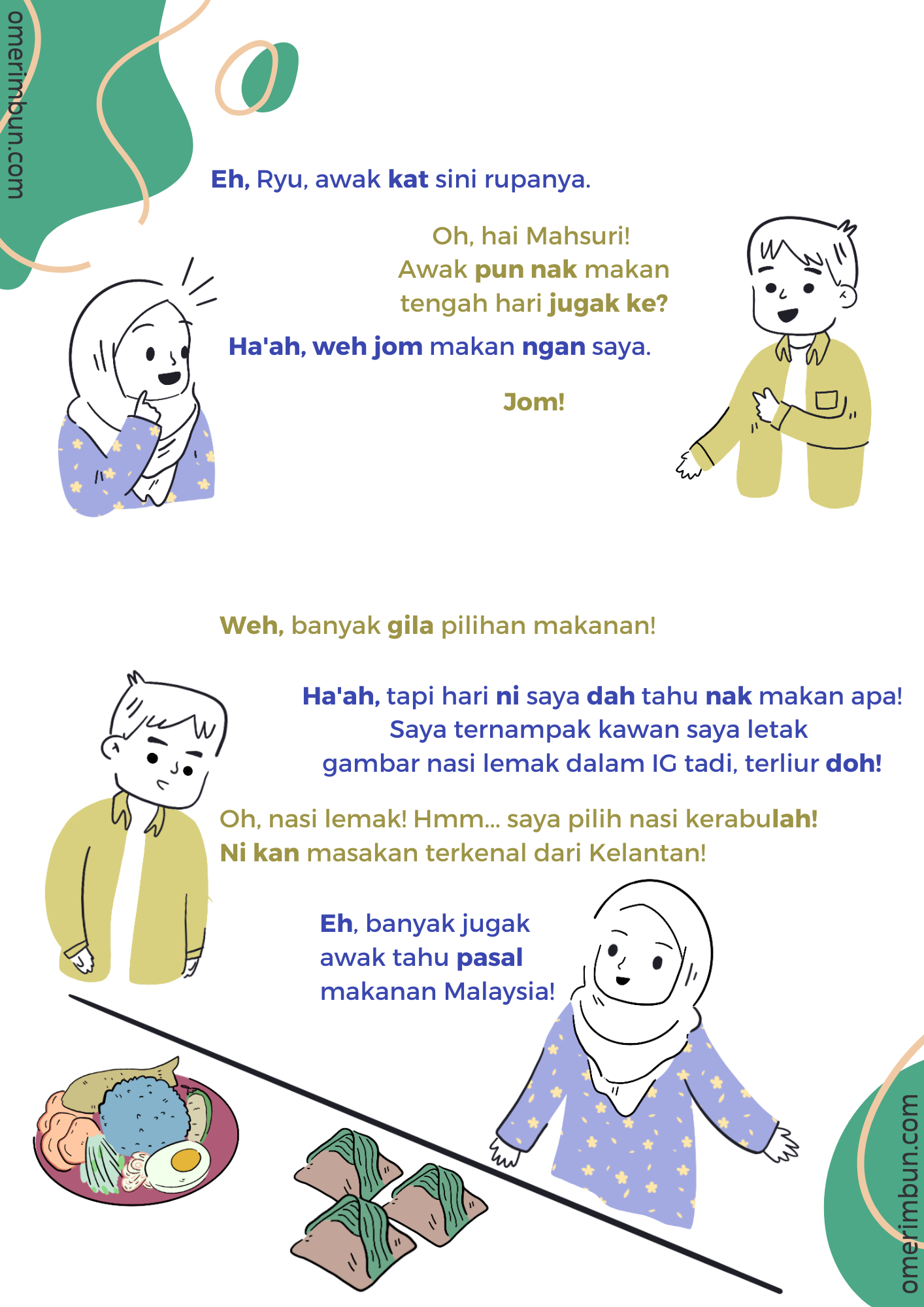
Vocabulary list:
Rupanya - turns out
Mahu - want
Makan - eat
Tengahari - afternoon
Juga - also
Mari - let’s/come
Banyak - many
Pilihan - choices
Makanan - food
Di sini - here
Kedua-duanya - both
Masuk - enter
Ke dalam - into
Kafe - cafe
Betul - right/That’s right
Selalu - always
Mengambil masa - take time
Lama - long (time)
Memilih - choose
Tetapi - but
Hari ini - today
Sudah - already
Tahu - know
Apa - what
Ternampak - (accidentally) see
Letak - to put (to upload)
Gambar - picture
Terliur - salivate
Pernah - have
Hidangan - dish
Tersebut - that
Dengar kata - I heard that
Terkenal - famous
Kelantan - a state in eastern peninsular Malaysia
Banyak juga - quite a lot
Tentang - about
Sedapnya - so delicious
Sambal - chili paste
Terlalu - too
Pedas - spicy
Untuk - for
Explanations of useful phrases and words:
✓ Kat sini - Di sini - here
The formal way of saying here is the combination of the preposition ‘di’, meaning at, and the word ‘sini’, meaning here. However, colloquially Malaysians would use ‘kat’ in place of ‘di’ as a preposition.
‘Kat’ is shortened from ‘dekat’, which actually means near or nearby, but within this context, it means at. This is applicable whenever you want to refer to a location. Let’s see a few examples.
Saya kat rumah.
I am at home.
Lina kat sana.
Lina is there.
Buku saya kat mana?
Where is my book?
It’s definitely best to use ‘kat’ instead of ‘di’ when conversing in a casual setting to sound more natural, regardless of who you’re talking to.
✓ Rupanya - turns out
‘Rupanya’ is not informal, but it has a rather unique way of usage and has no direct translation into English. The closest meaning would be ‘turns out…’, and you can gather that the word is used to show a realisation, a finding or dawning understanding of something. Let’s see a few contexts that this can be used in.
[Finding your book somewhere]
Kat sini rupanya buku aku!
Turns out my book was here!
[Gossiping with your friend]
Aku ingat Minah tu baik, rupanya dia suka menipu!
I thought that Minah was nice, turns out she loves lying!
[After listening to your friend’s explanation of their latest life update]
Camtu rupanya.
Oh, I see. (lit. Turns out it’s like that, I see.)
Note: See how 'camtu' is used in another situation in "Meeting New Friends"

✓…-Nya affix - Sedapnya - So good
Banyak gila - So many
The -Nya affix can refer to two things: one, it refers to possession of the noun, and two, it is used to emphasise an adjective. Here, I’ll only speak about the latter usage.
As mentioned, when -Nya is affixed to an adjective, it functions as an emphasis to the meaning of the adjective. This can be used in any type of setting, formal or informal, and doesn’t have any negative implications. Here’s a list of a few words with this:
Panasnya!
So hot!
Hebatnya!
So amazing!
Pahitnya!
So bitter!
Bijaknya dia!
He/she’s so smart!
There is also a way to speak more colloquially when emphasising something, by using ‘gila’ after an adjective. ‘Gila’ means crazy, so in a sense ‘banyak gila’ would translate to ‘crazy lots’. Note, however, that it’s quite a rough way of speaking, and is often used amongst friends. Best to avoid using this word with your elders and superiors.
Panas gila!
It’s so/crazy hot!
Hebat gila!
It’s so/crazy amazing!
Sedap gila nasi lemak ni!
This nasi lemak is crazy tasty!
Pandai gila dia!
He/she’s so smart!
✓Ha’ah - yeah
While you can definitely say ‘ye’ or ‘iya’ as a sign of agreement, ‘ha’ah’ is a casual yup that you can use with friends and families.
✓Jom
‘Jom’ is a common and colloquial way to invite someone to something. You can use it accordingly with your elders and to a certain extent, your superiors, if you have a friendly relationship with them.
[Talking to your friend]
Jom tengok wayang esok.
Let’s watch a movie tomorrow.
[Talking to your father]
Ayah, jom kita pergi makan kat Mcdonald’s.
Dad, let’s go eat at Mcdonald’s.
[Talking to your boss]
Boss, jom makan tengahari.
Boss, let’s eat lunch.
✓ Ngan - Dengan - with
✓Ni - Ini - this
As previously discussed, Malaysians shorten our words quite a bit and it’s no different in this case.
‘Ngan’ is shortened from ‘dengan’ which means with. This is very commonplace but also very casual, so avoid using this in formal settings.
‘Ni’ is shortened from ‘ini’, meaning this. This is colloquial but usage of this in private formal settings like meetings are fine.
✓ -Lah affix
Ah, we have arrived at the ubiquitous ‘lah’. It is probably one of the most recognisable speaking patterns of Malaysians, almost to the point of it being (arguably) our national identity.
It is affixed at the end of sentences for emphasis, assertion of position, or imploring of solidarity. It can be used in formal settings, usually to add a friendlier tone to imperative sentences by a person of authority such as a teacher, preacher or politician. However, it does not imply any negative nuance so it can be used with your friends, elders, and superiors.
[When you’re feeling lazy]
Aku buat kerja sekolah esok lah.
I’ll do my homework tomorrow. (as opposed to today)
[When your boss thinks you haven’t finished your work]
Boss, saya dah buat kerja lah.
Boss, I have completed my work. (as opposed to the assumption that it hasn’t)
[When trying to persuade your friends]
Bukan aku yang curi duit dia lah!
It wasn’t me who stole it!
Note that without ‘lah’, the sentences would convey the meaning just fine. However, ‘lah’ lends a greater effectiveness to your message.
✓Weh, doh
‘Weh’ is a slang word used when you want to call your friend in a very informal and casual way. It functions a bit like hey but can be considered rude if you’re not close enough to someone. It can also be a display of realisation, kind of like how ‘wait a minute…’ is used when someone has a dawning realisation, or a display of surprise or excitement like OMG. Let’s see how it’s used:
Weh, kau nak makan tak?
Hey, do you want to eat?
Weh, aku nampak benda pelik tadi.
OMG, I just saw something weird.
Weh, aku rasa jawapan aku salah tadi…
Oh no, I think my answer was wrong just now…
This is very contextual but once you hear enough Malay conversations, you’ll realise how frequently it’s used amongst friends. And yes, definitely avoid using it with your elders or superiors.
‘Doh’ on the other hand, works a bit like ‘you know what bro’, or similar to ‘gila’ in that it functions as an emphasis. For the former usage, it comes at the end of a sentence. For the latter usage, it would of course come after an adjective to emphasise it. As you’ve already observed from the English equivalent, ‘doh’ is VERY colloquial and slang-y. Let’s put some context into this slang term.
[Telling your friend about your pigging out session]
Aku makan habis sepuluh pinggan mee doh.
I finished ten plates of noodles, bro.
[Exclaiming the deliciousness of a meal]
Sedap doh nasi ni!
This rice is so tasty!
[Telling your friend about your regrets]
Aku menyesal keluar dengan dia doh.
You know what, I regret going out with her, bro.
✓Kan? - right?
This is a word placed at the end of a sentence when you want confirmation or reassurance on something. This is casual, but can be used with your elders or superiors, depending on how friendly you are with them. Here are some examples:
[Talking to your friend]
Kau balik esok, kan?
You’re going back tomorrow, right?
[Talking to your grandfather]
Datuk belum makan kan?
Grandpa, you haven’t eaten yet, right?
[Talking to your colleague]
Kamal, awak dah siapkan dokumen tu kan?
Kamal, you’ve finished the document, right?
[Talking to your employee]
Encik Mohamad, saya perlu buat bahagian ni kan?
Mr. Mohamad, I have to do this part, right?
✓Pasal - Tentang - about
The formal word for about is ‘tentang’, but in daily conversations, it is more common to use ‘pasal’, which comes from the word ‘fasal’ of the same meaning. This can be used with friends, family and colleagues. Let’s see a few examples:
[Asking your neighbour about your other neighbour]
Diorang bergaduh pasal apa?
What are they fighting about?
Note: see the pronoun post for more on ‘diorang’
[Talking to your coworker]
Saya nak cakap pasal data…
I want to talk about the data…
[Your mom scolding you for not doing your homework]
Pasal apa kau taknak buat kerja sekolah?
Why don’t you want to do your homework?
Note that in the last sentence, ‘pasal apa’ is translated into why, when the literal translation would be ‘about what’. Instead of using ‘kenapa’, it is quite common and very colloquial to use ‘pasal apa’ to ask for reasons.
✓Nasi lemak, Nasi kerabu, sambal
One of the things you’ll almost always hear in Malaysia is conversations surrounding food. Food is arguably one of the most important aspects of being Malaysian, and enjoying being in Malaysia. So, you’ll definitely need to know the basic names of Malaysian food.
‘Nasi’ means rice, and ‘lemak’ means rich or fat. The rice is cooked in coconut milk and served with sambal, eggs, fried anchovies and cucumber. You could also add extra ingredients such as squid or chicken. This is probably considered to be the national dish of Malaysia.
Sambal is a common chili paste condiment served as a side dish, or a main dish, usually cooked with a protein of some sort. There are different takes on the sambal, and everyone has their preferences.
Nasi kerabu is a famous dish from Kelantan. The rice is blue and it is served with an array of ingredients like fish crackers, eggs, pickles, sambal, salads and so on.
Read the next grammar explanation ▶️
